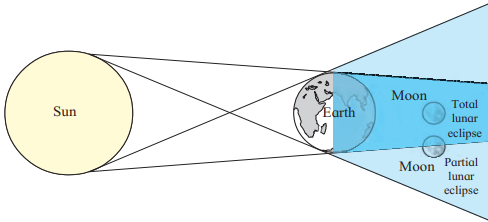Questions Answers For All Chapters – Geography Class 7
How Seasons Occur – Part 1
Q. 1. Correct the wrong statements. Write down the corrected ones.
(1) The moon revolves around the sun.
Corrected: The moon revolves around the earth, and the earth revolves around the sun. The moon indirectly revolves around the sun.
(2) On a full moon day, the moon, the sun and the earth are positioned in this sequence.
Corrected: On a full moon day, the sun, the earth, and the moon are positioned in this sequence.
(3) The revolutionary orbits of the earth and the moon are in the same plane.
Corrected: TThe revolutionary orbits of the earth and the moon are not in the same plane; the moon’s orbit makes an angle of about 5° with the earth’s orbit.
(4) In one revolution of the moon, its orbit intersects the earth’s orbit only once.
Corrected: In one revolution of the moon, its orbit intersects the earth’s orbit twice.
(5) It is alright to observe a solar eclipse without protecting the eyes.
Corrected: It is not safe to observe a solar eclipse without protecting the eyes; special goggles or dark glasses should be used.
(6) An annular solar eclipse occurs when the moon is in the perigee position.
Corrected: An annular solar eclipse occurs when the moon is in the apogee position.
Q. 2. Select the correct option.
Answer – Solar Eclipse: The correct option is (b) because a solar eclipse occurs when the moon comes between the earth and the sun, blocking the sunlight.
(2) The shape of sun disc at the time of annular solar eclipse.
Answer – Shape of the Sun’s Disc during an Annular Solar Eclipse: The correct option is (b) because, during an annular solar eclipse, the moon appears smaller than the sun, creating a ring-like appearance.
(3) Apogee position of the moon.
Answer – Apogee Position of the Moon: The correct option is (c) because the apogee is the farthest point of the moon from the earth in its elliptical orbit.
Q. 3. Complete the following table.
| Details | Lunar Eclipse | Solar Eclipse |
|---|---|---|
| Phase of the moon | Full moon day | New moon day |
| Sequence | Moon – Earth – Sun | Sun – Moon – Earth |
| Type of eclipse | Earth’s shadow covers the moon (Lunar Eclipse) | Moon’s shadow covers the sun (Solar Eclipse) |
| Maximum duration of total eclipse | 107 minutes | About 7.5 minutes |
Q. 4. Draw and label the diagrams.
(1) Total and partial solar eclipse.
(2) Total and partial lunar eclipse.
Q. 5. Answer the following.
(1) Why do the sun, the moon and the earth not lie in one and the same line on every full moon and new moon day?
Answer – The moon’s orbit is tilted by about 5° with respect to the earth’s orbit. Because of this inclination, the sun, the moon, and the earth do not align perfectly on every full moon and new moon day. Eclipses only occur when the moon’s orbit intersects the earth’s orbit at specific points called nodes.
(2) When total solar eclipse occurs why is partial eclipse also seen from the earth ?
Answer – A total solar eclipse occurs only in the region where the moon completely covers the sun’s disk (the umbra). However, outside this region, there is a larger shadowed area (the penumbra), where the sun is only partially covered by the moon. This results in a partial solar eclipse being visible from those regions.
(3) Suggest measures that can be taken to eradicate the superstitions related to the eclipses.
Answer –
- Conduct scientific awareness campaigns to educate people about the natural causes of eclipses.
- Use media and educational institutions to spread factual information about eclipses.
- Encourage people to safely observe eclipses using scientific methods to eliminate fear.
- Promote knowledge from space research and astronomy to help people understand celestial events.
(4) What precautions should we take while observing a solar eclipse?
Answer –
- Never look directly at the sun during a solar eclipse without proper eye protection.
- Use special solar filters, eclipse glasses, or welder’s glass (No. 14) to observe the eclipse safely.
- Avoid using regular sunglasses or homemade filters, as they do not provide adequate protection.
(5) What types of solar eclipses will occur in perigee condition?
Answer –
- When the moon is at perigee (the closest point to the earth in its orbit), it appears larger in the sky. This increases the chances of a total solar eclipse because the moon can completely cover the sun’s disk.
- An annular eclipse is unlikely at perigee because the moon’s apparent size is large enough to cover the sun entirely.






Leave a Reply